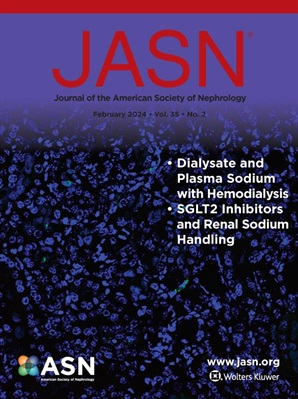External Validation of an Electronic Health Record-Based Diagnostic Model for Histological Acute Tubulointerstitial Nephritis.
IF 9.4
1区 医学
Q1 UROLOGY & NEPHROLOGY
Journal of The American Society of Nephrology
Pub Date : 2025-05-01
Epub Date: 2024-11-05
DOI:10.1681/ASN.0000000556
引用次数: 0
基于电子健康记录的组织学急性肾小管间质性肾炎诊断模型的外部验证。
背景:准确诊断急性肾小管间质性肾炎(AIN)通常需要进行肾活检。此前,我们在评估了电子健康记录中的 150 多个潜在预测因子后,结合四种实验室检验结果,开发出了一种预测活检确诊 AIN 的诊断统计模型。在此,我们在约翰霍普金斯医院(Johns Hopkins Hospital,JHH)和耶鲁大学的两个基于活检的队列中验证了这一诊断模型,这两个队列在地理位置和时间上分别与开发队列不同:我们分析了在约翰霍普金斯医院和耶鲁大学接受肾活检的患者(2019-2023年)。我们使用之前得出的模型系数评估了区分度(AUC)和校准,并使用截距校正因子对模型进行了重新校准,该因子考虑了开发队列和验证队列之间 AIN 基线患病率的差异:我们纳入了 1982 名参与者:我们共纳入了 1982 名参与者:1454 名来自 JHH,528 名来自耶鲁大学。与开发组(23%)相比,JHH(5%)和耶鲁(17%)的活检中AIN比例较低。JHH和耶鲁的AUC分别为0.73(0.66-0.79)和0.73(0.67-0.78),与开发集(0.73(0.64-0.81))相似。验证队列中的校准并不完善,尤其是在 JHH,但应用截距校正因子后情况有所改善。该模型将临床医生活检前怀疑 AIN 的 AUC 提高了 0.10 至 0.77(0.71-0.82):结论:AIN 诊断模型在两个验证队列中保留了辨别能力,但需要重新校准以考虑当地的 AIN 流行率。该模型提高了临床医生预测 AIN 的能力。
本文章由计算机程序翻译,如有差异,请以英文原文为准。
求助全文
约1分钟内获得全文
求助全文
来源期刊
CiteScore
22.40
自引率
2.90%
发文量
492
审稿时长
3-8 weeks
期刊介绍:
The Journal of the American Society of Nephrology (JASN) stands as the preeminent kidney journal globally, offering an exceptional synthesis of cutting-edge basic research, clinical epidemiology, meta-analysis, and relevant editorial content. Representing a comprehensive resource, JASN encompasses clinical research, editorials distilling key findings, perspectives, and timely reviews.
Editorials are skillfully crafted to elucidate the essential insights of the parent article, while JASN actively encourages the submission of Letters to the Editor discussing recently published articles. The reviews featured in JASN are consistently erudite and comprehensive, providing thorough coverage of respective fields. Since its inception in July 1990, JASN has been a monthly publication.
JASN publishes original research reports and editorial content across a spectrum of basic and clinical science relevant to the broad discipline of nephrology. Topics covered include renal cell biology, developmental biology of the kidney, genetics of kidney disease, cell and transport physiology, hemodynamics and vascular regulation, mechanisms of blood pressure regulation, renal immunology, kidney pathology, pathophysiology of kidney diseases, nephrolithiasis, clinical nephrology (including dialysis and transplantation), and hypertension. Furthermore, articles addressing healthcare policy and care delivery issues relevant to nephrology are warmly welcomed.

 求助内容:
求助内容: 应助结果提醒方式:
应助结果提醒方式:


